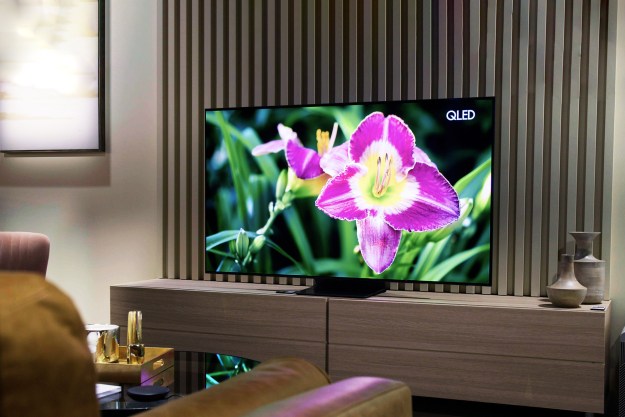“At $35 these headphones are a steal, even if only to replace the earbuds included in nearly every portable player”
- Excellent bass
- no amplifier needed
- excellent for bass driven music
- Uncomfortable after long use
- flimsy plastic earclips
- not very adjustable
- midrange easily overpowered by the bass
Summary
While the Koss KSC-35s were difficult to wear for over an hour, they absolutely dominate the niche of work-out headphones. Any deep pulsating or wispy deep toned ethereal music will bring out the best in these headphones, while more acoustic sounds will have a hard time being heard above the bass. Games fare well, but only as long as the user is able to stand the tight ear clips, and for exercise phones they can’t be beat. At $35 these headphones are a steal, even if only to replace the ear buds included in nearly every portable player. And if you accidentally crush them at the gym, they’re cheap to replace.
Introduction
Most people know Koss headphones as the old standby el-cheapo headphones you can get at any drug store or music shop when you forget to pack your own on vacation. It’s hard to believe that a pair of $35
The KSC-35s are individual earpiece, over-the-ear, foam padded designed headphones. The plastic clips that hold them to the pinna of the ear securely, but are not as flexible as some may want. While they should fit ~95% of the population, but prolonged use could get slightly painful. However, a quick review of the audiophile headphone forums will result in repeated recommendations for one main use: exercise.
Testing
The sound produced by the KSC-35s is very clear. Highs are crisp, but not scratchy. Mids are weaker, but the bass is excellent. The bass is very deep, and very powerful – excellent for jogging or cycling. The open air design allows the wearer to hear the surrounding noise in the background, and they’re easy enough to drive that even at ¾ volume, most portable players will be bordering on too loud. Sound does leak out easily, so avoid bringing them to the library. The soundstage is not as continuous as we would like – left and right side are distinguishable, but panning sounds will fade and reform at the center slightly – but this is easily forgiven when you consider it allows for better localization of external sounds.
We tested the KSC-35s with the following recordings: Bjork’s “Vespertine” (DVD-Audio and MP3), Mahler Symphony 10 (Berliner Philharmoniker – conducted by Sir Simon Rattle – DVD-Audio), The Cure’s “Disintegration” (Audio CD + MP3), Gary Numan’s “Exile” (CD and MP3), and Delerium’s “Karma” (CD and MP3) from a SoundBlaster Audigy 2 Platinum (for DVD-Audio, CD, and MP3), iRiver SlimX 350 (CD and MP3), and Rio PSA|Play 120 (MP3). All MP3s encoded with VBR 160kbps-300 kbps/44kHz.
During the Bjork audition, the headphones had no trouble keeping up with the deepest bass lines. The wider spatialization was noticeable, with most sound appearing to come from both sides or directly in front. This held true for Mahler, as well. Mids shined through with minimal distortion in Mahler, but you could hear the stress in the phones. Both Mahler and The Cure sounded smoothed over by the intense bass, including the MP3 encoded Cure. Vocals were pushed into the background slightly, and guitars struggled to be heard regardless of equalizer settings. Gary Numan was downright haunting, and sounded excellent with the airy low frequency sweeping effects. Delerium, which relies heavily on midrange frequencies was the worst sounding, and was simply not acceptable.
For use in games, Quake 3, Tribes 2, and Jedi Knight 2 were used. The overpowering bass was great for games. We could feel every rocket in out molars it was so deep. Localization of sound was acceptable. Cloaked player in Tribes 2 were easily identified, players in adjoining rooms could be anticipated with decent accuracy, and deflected blaster shots in JKII came across clean. Using Force Push and Pull in JKII was even more fun, since the sound could be felt. Unfortunately, after 45 minutes the discomfort took over, and testing halted.
Conclusion
While the Koss KSC-35s were difficult to wear for over an hour, they absolutely dominate the niche of work-out headphones. Any deep pulsating or wispy deep toned ethereal music will bring out the best in these
Editors' Recommendations
- Updating our Sony WF-1000XM5 review
- Samsung S95C OLED hands-on review: it’s time to get excited
- Edifier MP230 Hands-on Review: The pint-sized, retro Bluetooth speaker brings a vintage vibe
- Sonos Voice Control hands-off review: Now we’re talking
- All the new tech that blew our reviewers away this month




